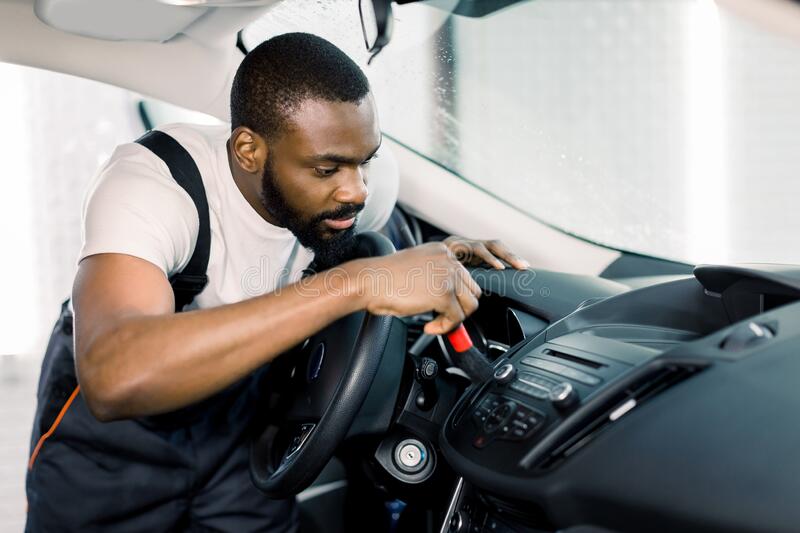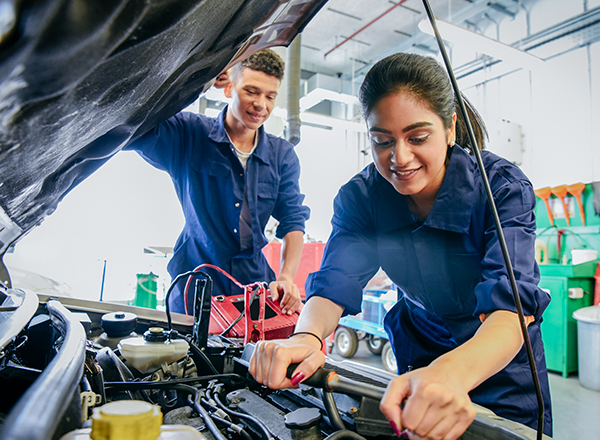
You may be wondering how to open a car door without keys if you locked your keys in the car. You're not alone in experiencing this. We will be discussing a few options to get into your car with no key. Among these are using a screwdriver or a tennis ball. These methods are both easy and effective.
How to unlock the car door
Learn how to unlock a car's door if it is locked. There are many options. An inflatable wedge can be used to force the door open. This method will not damage paint and locks doors on cars equipped with top-level knobs. Alternately, you could try a coat hanger contraption and a wooden door stop. Both of these methods require patience and a steady hand, but they will get the job done.

Without a key
A wire hanger or string can be used to replace a lost key. These methods can cause damage to wires and weather stripping, so they are not recommended for automatic locks or windows. It is better to use something not as sharp or as blunt as a drill, such as a clothes hanger. If you cannot find a steel rod, you can also use a long sturdy pole-type instrument.
With a screwdriver
Sometimes, it is necessary to open your car and discover that you do not have a lock or key. You should call the police in such an instance. You can also unlock your car doors with a screwdriver or a long metal ruler. These are a screwdriver and a long, metal ruler. When using a screwdriver, safety should always be your first priority. You could damage your car's finish by using a screwdriver. Wear gloves.
Tennis ball
Did you know that a tennis-ball can be used to unlock a car's doors? Although this is a common myth, it has survived the test. To perform the technique, use a small tennis ball to puncture the handle of the vehicle's car door. This creates an air pressure that allows the lock mechanism's to open. The MythBusters tested this trick by attempting different methods, including vacuum-sealing the vehicle lock and applying 100 psi of pressure to the car door.
With a rod
To open your vehicle's doors, try using a steel bar to pry it open. Simply hold the edge of the rod inside the door, and bend the tip slightly to create a hook. It is better to visit a hardware retailer if you are unsure how to open your vehicle's door. Or, you could buy a tool to unlock your car's doors.

With a straightened wire clothes hanger
To unlock cars with automatic locks, a straightened wire clothes hook can be used. Use the tool to form a small hook. Place it between the rubber molding of the door. Hold the button with the hook and pull the lock up. This method works only on clothes hangers. It may take some time to find the right tool.
FAQ
Can I work as an auto mechanic without a degree? Can I study part-time?
Although it's not mandatory, a degree can help. Employers prefer candidates who have completed a full degree. It shows that you've put the effort in and have done everything possible to succeed.
But, this doesn't mean you have to stop working while studying. Some universities allow students the flexibility to finish coursework during summer vacations and resume their studies later in year. Some universities allow students to take part-time classes throughout the year.
What do I need to know about car mechanics?
For an auto mechanic job, you don’t have to be an expert in cars. Only you need to know how things work. This is why most people get started with simple jobs such as changing brake pads or tires. Then they move on to more difficult repairs.
It is important to be able to read and understand diagrams as well as written instructions. It is also important to know how to determine if parts are damaged or need to be replaced.
It is important that you have proper training and guidance before you attempt to repair vehicles. This is especially true when you are dealing with costly components like engines and transmissions.
In fact, even though you won't need to know much about cars, you will need to thoroughly know the basics of mechanical engineering and physics. This means understanding the principles behind how engines work and how brakes function.
It's also worth noting that you'll need to be prepared to deal with all sorts of situations. For instance, you might find yourself in charge of a vehicle that has been in a serious accident. You'll also need experience dealing with breakdowns and accidents.
Finally, you must be willing to learn new skills quickly. As well as being able to diagnose problems, you'll need to be able to perform simple maintenance tasks such as tightening nuts and bolts.
How can I prepare myself for a mechanic apprenticeship
It is essential to understand what you are getting into. You must understand the workings of cars. This will allow you to be prepared for your first day at work.
You should also know how to fix common problems such as tires or broken lights.
This should help you learn how to diagnose issues and repair them yourself.
You'll also need to know how different parts fit together to put them back together again.
Finally, you should be able use tools safely.
These things will enable you to be a competent mechanic.
What type of job is there for a car mechanic?
There are three main areas of employment for car mechanics:
-
Automotive repair shops
-
Dealerships
-
Independent garages
Automotive repair shops
Most people think of this as the first step to becoming a mechanic. In fact, it's probably the easiest way to get started. You have two options: work in an existing shop or open your own.
If you are interested in working at a shop you will need to apply for membership to a union. After you are accepted to the union, you will receive training from it.
Once the training is completed, you can start working.
If you plan to open your own garage you will need to register with government. Once you have registered, certain standards will be enforced.
Once you register, you'll receive a license that allows you to operate your garage.
Your license will permit you to sell spares parts and perform minor repairs. It won't allow you to fix major engine problems.
Customers will expect you to not only sell spare parts but also provide advice and guidance.
Dealership jobs
Most dealerships employ mechanics who can specialize in a particular area of the car. They might be able to only fix brakes or replace tires.
However, dealerships may also employ general mechanics who are able to handle all aspects related to car repairs.
These positions often require applicants that they undergo special training before being allowed work. Employers can then choose the best candidates for their job.
Some dealerships will hire graduates straight from college. These graduates already have a basic understanding of mechanical engineering, so they are able to learn all about cars.
Independent garages
Independent garages aren't associated with any particular dealership. They are more focused on providing top-quality service.
Independent garages are not associated with any companies so they can afford higher wages. These jobs generally pay better than those at dealerships.
Independent garages can be just as good places to work, but this does not mean they are better. Many business owners prefer to own their businesses and not delegate the responsibility to others.
You may find yourself working for long hours and not having control over the day.
It is also possible to expect lower wages than you would if working at a dealer.
You can switch jobs easily. If you want to work at a dealership, then you simply need to ask your current employer if he would consider hiring you as a mechanic instead.
Alternatively, if you'd like to work at an independent garage, then you could try applying directly to the owner of the garage.
The bad news is that finding a new job isn't always easy. There are plenty of other factors that influence how much you earn.
For example, the type of vehicle you repair and whether you charge extra for labor.
What are the requirements of an automotive technician?
High school graduation or GED is required with excellent grades in English and math. Also, you must be able read and write. Before you can start working, you will have to pass a written exam and take a series practical tests.
Statistics
- Apprentice mechanics earn significantly less hourly than mechanics who have completed training, with a median wage of approximately $14.50 an hour, according to PayScale. (jobhero.com)
- There were 749,900 jobs available for automotive service technicians and mechanics in 2016, which is expected to grow by six percent through 2026. (jobhero.com)
- The U.S. Bureau of Labor Statistics (BLS) reports that the job outlook for automotive service technicians and mechanics is expected to decline by 4% from 2019 to 2029. (indeed.com)
External Links
How To
How to properly diagnose your vehicle for repair
The symptoms of your vehicle are the first thing you need to look at in order to determine whether it is in dire need of repairs. You can then follow these steps for a proper diagnosis of your vehicle.
-
Check engine lights. You should inspect the dashboard lights, such as the engine light indicator and the oil pressure gauge. Also, check the battery light indicator. If any of them have been flashing for several days, it may mean something is wrong with your vehicle.
-
Examine the treads of the tires. Tires can become worn and cause problems in handling and braking. It is also important to inspect the wheel treads. They should be clean and smooth. The best way to do this is to remove the wheels and take them off. Check the tread condition with a flashlight.
-
Pay attention to the level of your brake fluid. It is important to keep track of how much brake fluid you have in your car. This will ensure your brakes function properly. Low brake fluid levels can cause brake failure when you apply pressure.
-
Check the suspension system. Most vehicles have a suspension system that absorbs shocks and vibrations. It provides better control and allows smoother acceleration and deceleration. A suspension problem can cause your vehicle to feel wobbly and shake uncontrollably. To determine whether your vehicle may have a suspension issue, you can try to put weight on the rear or front axle and watch the movement.
-
Examine the steering column. Steering columns connect the steering wheels to other parts of the vehicle. Steering columns can be damaged by accidents. You should replace the steering column if it is loose or weak.
-
Observe the exhaust pipe. Exhaust pipes move gases from combustion chamber to atmosphere. If the exhaust pipe is damaged or leaks, harmful fumes can enter your cabin. Additionally, your tailpipe should be fixed immediately if it is bent.
-
Take a look under your hood. To check for unusualities, look under the hood. There could be fluid leaking from your engine. In addition, if you notice an unusual smell coming from your engine compartment, you should contact a professional technician.
-
It is important to inspect the air filter. The outside environment can collect dust and other debris in your vehicle's air filters. Dirty air filters can cause your vehicle to run poorly. Replace your air filter regularly.
-
The fan belt should be checked. The fan belt that connects your vehicle to the transmission is called the engine fan belt. If it breaks, the engine won't turn over. It is easy to replace the belt. All you need are a screwdriver & pliers.
-
Make sure you inspect the radiator hoses and hoses. The radiatorhose carries water from your radiator to the engine. It can crack or become damaged and leak hot liquid onto an engine. You only need a pair of needle-nose pliers and a small wire brush to repair the hose.
-
You should inspect the windshield wipers. Windshield wipers use electricity to remove snow and rain. If they stop working they could leave streaks behind on your window glass. You can fix the problem by changing the washer fluid.
-
Check the battery cables. The battery cables provide power for the electrical systems in your car. When you replace batteries, make sure to disconnect the negative cable first. Failure to do so can damage your alternator.
-
Pay attention to your headlights. The headlights provide illumination for the road ahead. If they don't work properly, it can cause poor visibility. Check the bulbs to see if they've burned out.
-
Make sure you have your lights on. If you approach other drivers at night, lights will warn them. If one doesn't work, it could distract you and lead to an accident.
-
Make sure you check your brakes. Before you get in a car accident, your brakes will be slowing down your vehicle. You may lose control of your vehicle and crash if the brakes don't function properly.
-
Make sure to change the oil. Your engine will stay lubricated by the oil. This oil helps to prevent metal parts becoming too worn out. It is recommended to change the oil once a month.